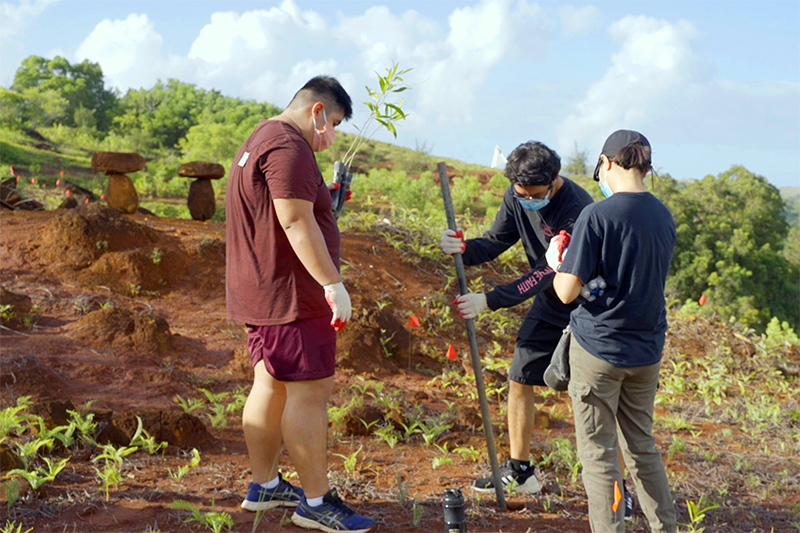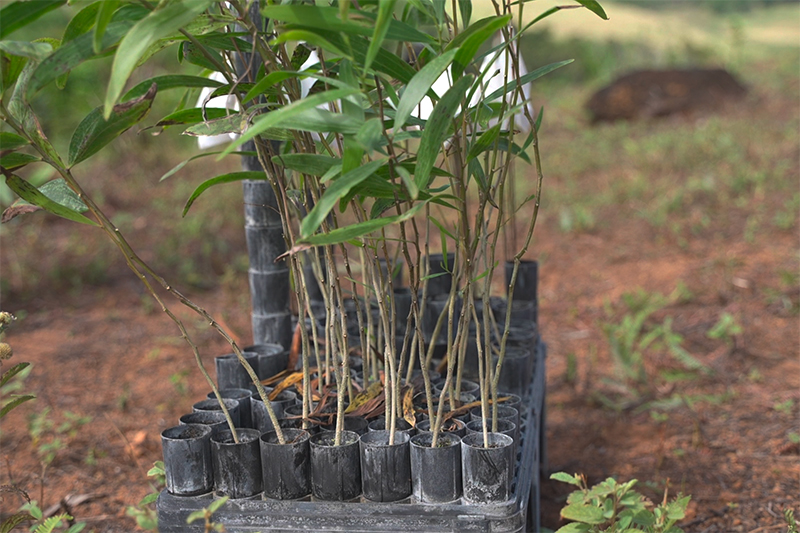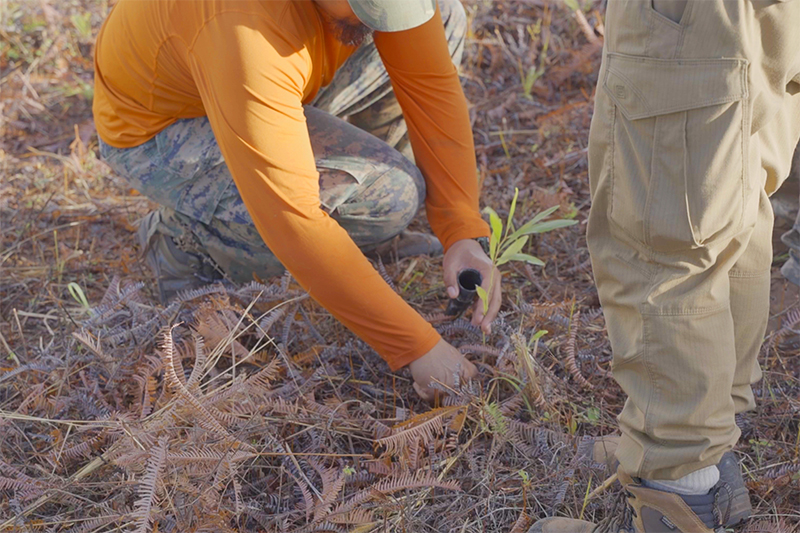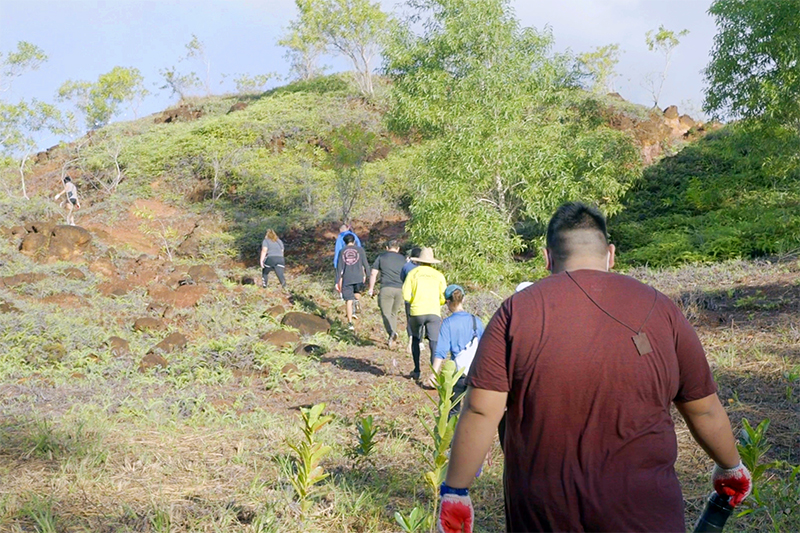Sea Grant volunteers plant 1,500 trees to prevent erosion into Ugum River
Sea Grant volunteers plant 1,500 trees to prevent erosion into Ugum River
Sea Grant volunteers plant 1,500 trees to prevent erosion into Ugum River
1/13/2022
Approximately 1,500 new trees will help to combat erosion and contribute to a healthier watershed from the Ugum River in Inalåhan following a tree-planting event last month. Volunteers assisted the effort, led by the Guam Restoration of Watersheds (GROW) initiative from the University of Guam Sea Grant program.
Without trees, loose sediment flows downstream through watersheds, resulting in the destruction of vegetation, depletion of land mass, an accumulation of sediment in nearby rivers and reefs, and loss of wildlife over time.
The areas upstream of the Ugum River are examples of this — having become badlands over time due to a combination of negligent off-roading, arson, and feral ungulates feeding on vegetation, according to Teddy Concepcion, GROW team lead and a UOG Sea Grant extension assistant. To restore a healthy Ugum ecosystem and watershed and for the badlands to thrive and potentially be cultivatable in the future, it will need increased plant biodiversity and rehabilitated soil.
“The ultimate goal is to reforest our lands to prevent any more sedimentation getting into our waters and to eliminate erosion of our lands,” Concepcion said, adding that the Ugum River supplies two million gallons of water to southern residents daily. “It’s hard to see now, but this area we’re in was a lot higher, had a lot more soil, and a lot more organic matter. If we continue to let it be, there will no longer be an area here.”
Volunteers planted native tree species, including Morinda citrifolia (ladda, or noni fruit), Calophyllum inophyllum (da’ok, or mastwood), and Glochidion marianum (åbas, duendes, or chosga) in areas with existing healthy soil. They also planted Acacia auriculiformis (acacia) in the badlands. Though acacia trees are not native to Guam, they benefit badlands by quickly fixating nitrogen and providing organic matter to rebuild the soil, Concepcion said, retaining ground moisture with their shade, and serving as windbreaks to keep other trees sturdy and protected from spreading fires.
“I’m super stoked that people want to help. I feel really good about it,” Concepcion said. “I’m extremely grateful for everybody that came out today.”
Christianna Ebeo, a youth ambassador with the Guam Green Growth (G3) initiative and a member of AmeriCorps UOG, has been planting trees since she was in high school. She made it a goal to assist with conservation efforts through outreach activities and talking to the public.
“I want to have children of my own in the future, and it makes me happy knowing they get to experience all the greenery the island has to offer,” she said. “Come out if you can. Would you want to pass this up? It’s beautiful.”
Christine Camacho Fejeran, Guam Department of Agriculture Forestry and Soil Resources division chief, also participated in the planting with other members of her forestry team.
“All I’ve got to say for this project is we need more of them. It’s an amazing effort between UOG Sea Grant and all the other partners that come to the table,” she said. “It thrills me to know that, island wide, these efforts that take place here mean the places where I grew up fishing, that I grew up hiking, are going to continue to be protected so that my kids and their kids will have the same opportunities, if not similar, or, maybe, better, than I had in my youth.”
Volunteers and community partners are essential in being able to carry out efforts like this, said Austin Shelton, director for UOG Center for Island Sustainability and Sea Grant.
“By having community partners and volunteers, we’re able to put more trees in the ground and have a more positive impact for our environment,” Shelton said. “If anyone wants to leave a lasting legacy for our island and do something great, tree planting is a wonderful way to do that.”
Residents can look forward to another GROW tree planting event this July.
“It’s good to help out for the future. It’s a really nice feeling to come, bright and early on a Saturday, and help the island,” said volunteer Jordan Suzuki.
UOG Sea Grant and the GROW initiative are supported by the Island Beautification Task Force, led by the Office of the Lieutenant Governor of Guam; the Southern Guam Soil and Water Conservation District; the Guam Department of Agriculture; the U.S. Department of Agriculture; the U.S. Forest Service, and the Mayors’ Council of Guam.




